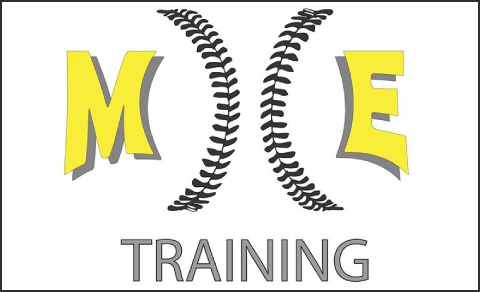Neal’s Knowledge
Neal’s Knowledge: How to Control the Running Game
I had the pleasure of playing for Jim Leyland for three years. Sitting next to him was like going to Harvard for 12 years and studying baseball. I learned a lot from him and he taught me if you don’t hold guys on properly you will run yourself right out of the game. It is very important for pitchers to keep the running game in check and there’s several ways to do it. I will break it down for lefties and righties. Lefties: You have a huge advantage. As we saw from Jon Lester, you don’t even have to throw the ball over in order to prevent runners from stealing. Leyland told me the most important thing is being able to vary how long you hold onto the ball prior to your delivery. Base runners love seeing a pattern with how many looks you give and how many seconds you are in your set position p...
Neal’s Knowledge: How To Approach a Start on Three Days Rest
I will start off by saying it is the coach’s responsibility to take care of a pitcher’s arm. No kid in their right mind will tell the coach they don’t want the ball in a big game–especially not a team’s ace in a playoff game. Assuming the pitcher is healthy and he is asked to take the ball on three days rest, as opposed to the usual four or five, it is now the pitcher’s job to properly prepare. If you know that you will be going on short rest, it is very important to keep a few things in mind: Do not lift weights in between starts: You are putting enough strain on your pitching arm by throwing on short rest, so there is no need to make matters worse by doing any upper body workouts that may compound the issue. Make sure you get your long-distance running...
Neal’s Knowledge: What is ‘Pitching Backwards’ and Why Should You Do It?
If hitting is timing, then pitching is disrupting timing. There is no better way to do that than to be unpredictable as a pitcher. Hitters are taught to look for fastballs in particular counts–0-0, 1-0, 2-0, 2-1, 3-1, 3-2. They sit back and look for a pitcher’s fastball. If they have any doubt what type of pitch is coming–they lose a little bit of confidence. That can be just enough to get him off his game. Throwing breaking balls and change ups in these hitter’s counts is called ‘pitching backwards’ and it is a very important for a young pitcher to eventually develop this skill in order to get to college because that’s when hitters will really make you pay for your mistakes. At the lower levels, it’s really not as important to pitch backward...
Neal’s Knowledge: How to Control the Running Game
I had the pleasure of playing for Jim Leyland for three years. Sitting next to him was like going to Harvard for 12 years and studying baseball. I learned a lot from him and he taught me if you don’t hold guys on properly you will run yourself right out of the game. It is very important for pitchers to keep the running game in check and there’s several ways to do it. I will break it down for lefties and righties. Lefties: You have a huge advantage. As we saw from Jon Lester, you don’t even have to throw the ball over in order to prevent runners from stealing. Leyland told me the most important thing is being able to vary how long you hold onto the ball prior to your delivery. Base runners love seeing a pattern with how many looks you give and how many seconds you are in y...
What Is the Proper Way to Warm Up Prior to a Start?
It’s no secret that arms are getting injured at an alarmingly high rate. With that being the case, why wouldn’t you do everything you can to prevent an injury? It starts with warming up properly before a start. Here’s a rundown of what I did before my starts and it’s something that helped me avoid any arm injuries through out my career. A pitcher should be taking a light jog around the field in order to get the blood flowing. Regardless of the weather, this is essential in the process of preparation. You should be stretching out. This includes both your legs and your arms. You can do some arm circles, you can also do some light band work to keep working on getting that blood flowing. Run some sprints. Doesn’t have to be at 100 percent effort, but it’s wi...
Neal’s Knowledge: Should You Be High 3/4, Low 3/4 or Submarine?
No two pitchers are exactly alike. A major reason for this is because everyone has a slightly different release point. For that reason, certain pitches will be more effective for pitchers. I’ll go over the three most common types of release points, as well as which pitches work best for pitcher’s that employ those arm slots and then you can choose which one is best for you… High 3/4 Very rarely is a pitcher directly “over the top”. Clayton Kershaw is probably the closest to that. Most pitchers throw from a high 3/4 delivery. The reason for this is because it enables pitchers to maximize their velocity and their command while also putting less strain on their arm than dropping down. The reason it puts less strain on your arm is because you’re using your l...
Neal’s Knowledge: What Should a January Throwing Program Consist Of?
A pitcher should be treated like a race horse–carefully groomed and you cannot accelerate that process. When a pitcher picks up the ball for the first time in January, they haven’t pitched off a mound for over two months. I tell my pitchers before I see them on the mound they should have done a bit of long-tossing. You should not be going from inactivity to a mound. I took a lot of precautions to stay healthy in my career, and for that reason I landed on the DL only once–and it was a freak accident during BP while running sprints. Here are some crucial steps young pitchers should be following in order to avoid injury and be at their best by the time the season comes around. You should not be lifting heavy weights at all once you start throwing from a mound. Doesn’t ...
Neal’s Knowledge: How to Approach The Recruiting Process
One of the things people always ask me is–“how did you get noticed by the University of Miami?” Well, things are very, very different than they were in 1978. First off, the school only recruited from the list of the top 25 or so players in the country and I was fortunate enough to have had a good enough junior year that I was on their list and they found me. For the average Long Island baseball player, though, that may not be an option. On the bright side, there’s so many more resources available to you in 2017 than I had coming out of Sachem HS in the ’70s. So here is my advice given my years of experience involved in this baseball community on how you can pick which college you want to attend based on your baseball ability and your academic prowess without w...


















